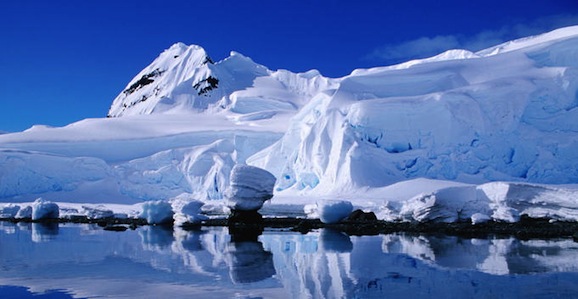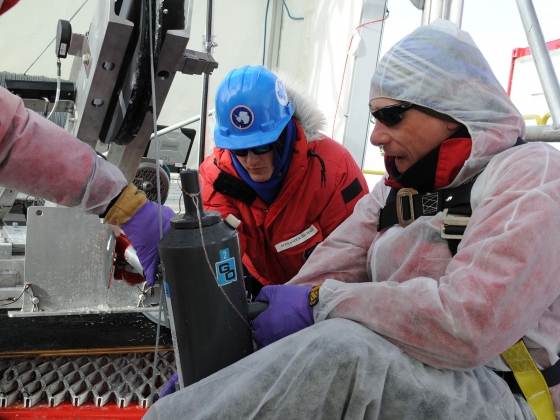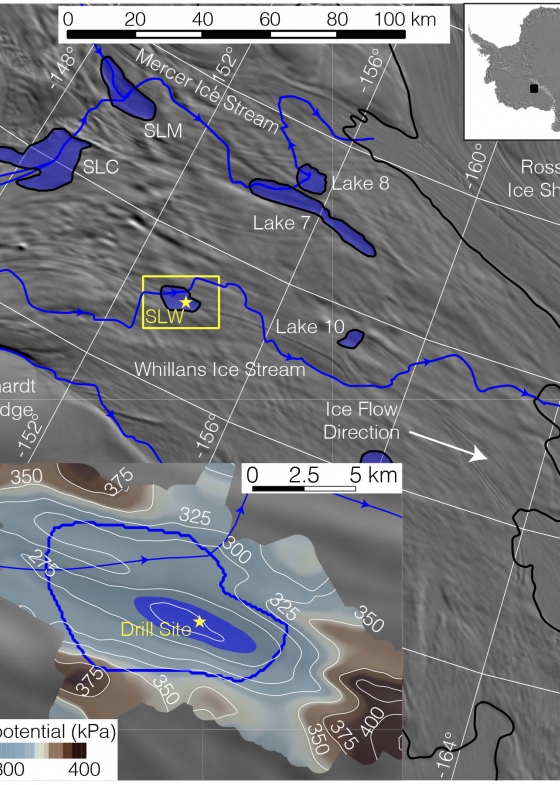Thousands Of Life Forms Found A Half-Mile Below The Antarctic Ice
This article is more than 2 years old
 In “Blues for a Red Planet,” the fifth episode of the original Cosmos, Carl Sagan focuses on Mars and the possibility of finding life there (at the time of filming, water had not yet been found on the planet’s surface). Sagan believed that life once existed on the Red Planet, and that it probably still did, at least in microbial form. He supported this claim by talking about a colleague and friend of his who spent time (and eventually lost his life) exploring the Antarctic, proving that such life existed even there. It’s hard to imagine how anything could survive in that climate, often devoid of sunlight and piled endlessly with ice, but as always, life finds a way.
In “Blues for a Red Planet,” the fifth episode of the original Cosmos, Carl Sagan focuses on Mars and the possibility of finding life there (at the time of filming, water had not yet been found on the planet’s surface). Sagan believed that life once existed on the Red Planet, and that it probably still did, at least in microbial form. He supported this claim by talking about a colleague and friend of his who spent time (and eventually lost his life) exploring the Antarctic, proving that such life existed even there. It’s hard to imagine how anything could survive in that climate, often devoid of sunlight and piled endlessly with ice, but as always, life finds a way.
A group of researchers from the WISSARD (Whillans Ice Stream Subglacial Access Research Drilling) expedition team have been exploring the Western Antarctic Ice Sheet, which contains roughly 10% of the continent’s ice. The team found a flourishing ecosystem roughly half a mile below the ice sheet’s surface in a frozen lake that hasn’t been touched by sunlight or air for millions of years. In a paper recently published in Nature, they were able to, “prove unequivocally to the world that Antarctica is not a dead continent,” said the project’s chief scientist John Priscu.
 The microorganisms the team found live on ammonium and methane, which may have resulted from the decomposition of organic material long ago when the continent was warmer. Most of the samples are Archaea, a type of single-cell organism that resemble bacteria and are one of the three main types of life (Eukaryote and bacteria being the others). The area contains a surprisingly diverse and active ecosystem of “about 4,000 things we call species,” according to the team. This is the first such definitive evidence ever presented, even though the team has believed in the presence of such ecosystems for decades. Priscu himself has conducted researched on both poles and has spent 30 seasons on Antarctica. Over ten years ago he published manuscripts arguing that the continent could and does contain microbial life. It must feel good to be proven right.
The microorganisms the team found live on ammonium and methane, which may have resulted from the decomposition of organic material long ago when the continent was warmer. Most of the samples are Archaea, a type of single-cell organism that resemble bacteria and are one of the three main types of life (Eukaryote and bacteria being the others). The area contains a surprisingly diverse and active ecosystem of “about 4,000 things we call species,” according to the team. This is the first such definitive evidence ever presented, even though the team has believed in the presence of such ecosystems for decades. Priscu himself has conducted researched on both poles and has spent 30 seasons on Antarctica. Over ten years ago he published manuscripts arguing that the continent could and does contain microbial life. It must feel good to be proven right.
Priscu has also predicted that sub-glacial Antarctica would become the biggest wetland on Earth, chock-full of mineral and chemical-ingesting microorganisms. Along with many other scientists, he believes that global warming will cause the release of this methane into the atmosphere, which contributes to the greenhouse effect. But for now, they’re celebrating their discovery—being at the bottom of the world, for them, is to be on top of it.














Leave a comment
You must log in to post a comment